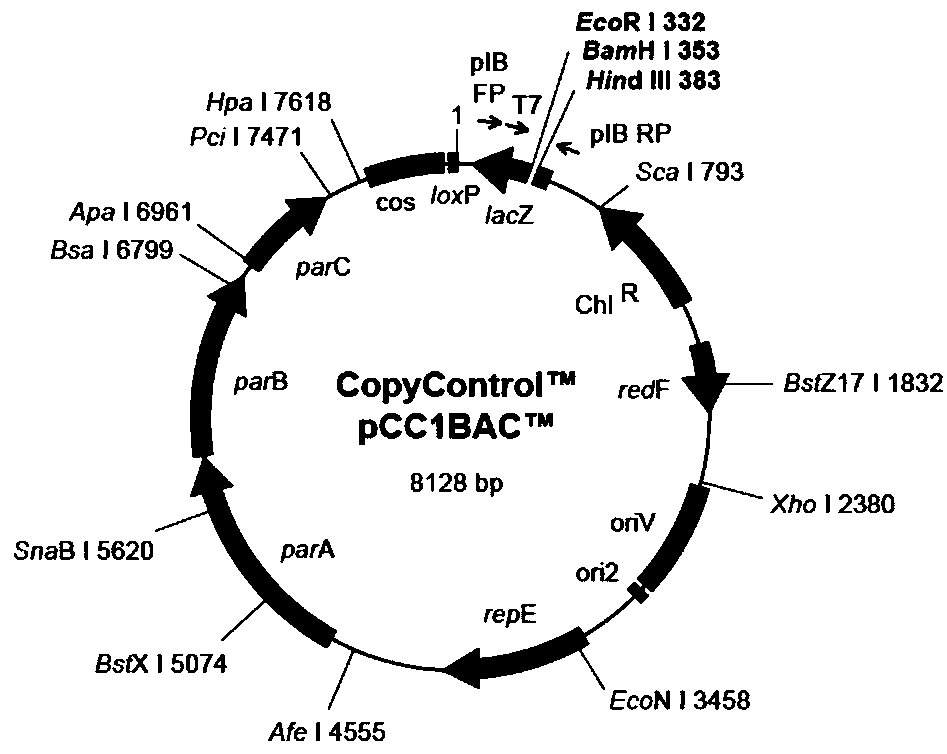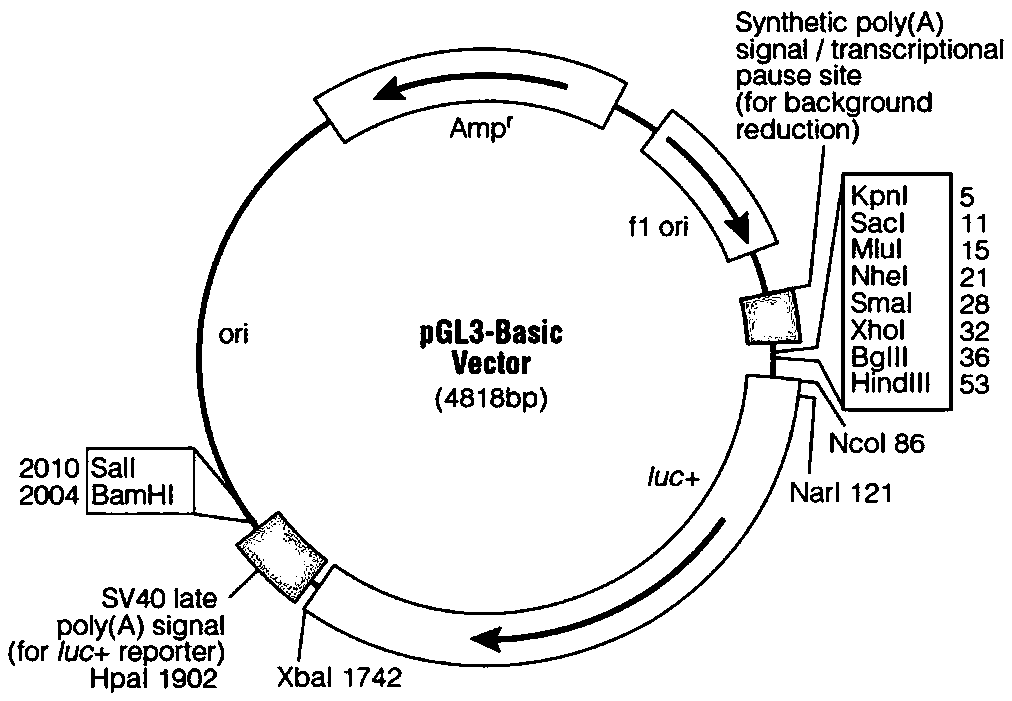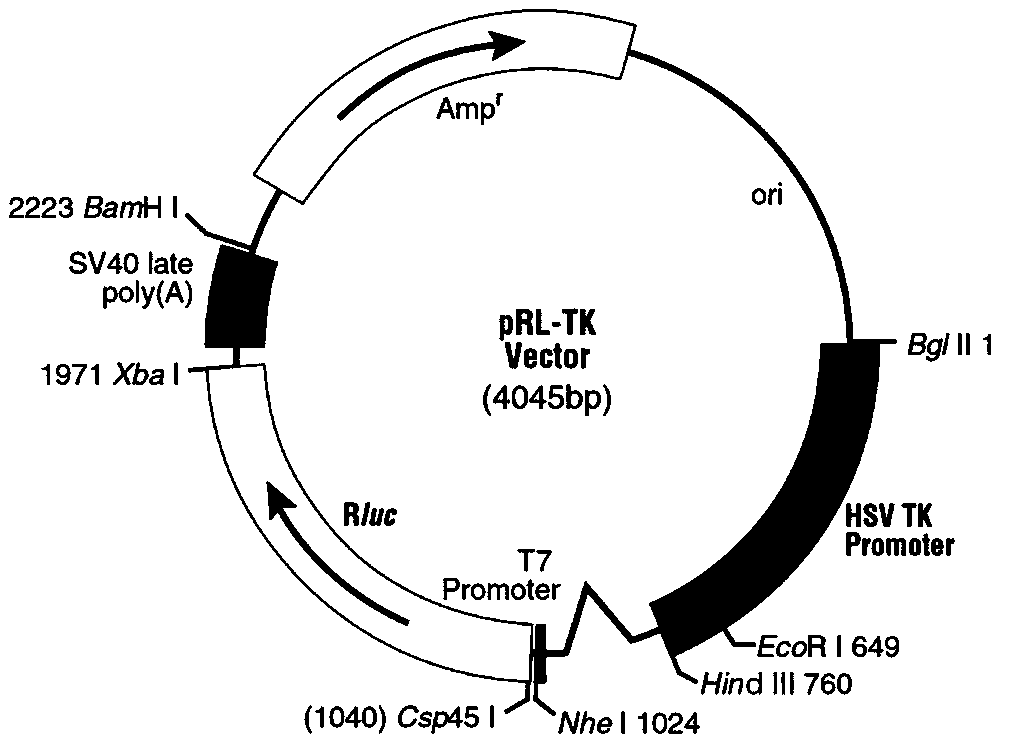Regulatory Sequence of Porcine Liver Carboxylesterase Gene
A pig liver carboxylesterase, pig genome technology, applied in genetic engineering, plant gene improvement, enzymes and other directions, can solve problems such as restricting the research and application of PLE gene regulation mechanism, disordered sequence, and inability to provide sufficient basis for research.
- Summary
- Abstract
- Description
- Claims
- Application Information
AI Technical Summary
Problems solved by technology
Method used
Image
Examples
Embodiment 1
[0047] Example 1: Primer Verification
[0048] Using the genome of Tongcheng pig (a common local pig breed in Hubei) as a template (the genomic DNA sample of Tongcheng pig was donated by Professor Liu Bang, School of Animal Science and Technology, Huazhong Agricultural University), and using the primer pair (ID1F, ID1R) in the above table 1 For PCR amplification, screen suitable primers according to the presence and size of the product, and the PCR reaction system is shown in Table 3. Amplification conditions: pre-denaturation: 94°C for 5min, denaturation: 94°C for 30s, annealing: 62°C for 1min, extension: 72°C for 4min, number of cycles: 30cycles, extension: 72°C for 10min. After PCR amplification was completed, the products were detected by 0.8% agarose gel electrophoresis. From the agarose gel electrophoresis pattern, it can be seen that the size of the amplified band is similar to the expected target product and the band is brighter, indicating that the pair of primers is...
Embodiment 2
[0051] Embodiment 2: Cloning, screening PLE1 gene
[0052] Currently, there are two methods for screening target genes in BAC library: hybridization method and PCR screening method. PCR screening method is a routine method used in the laboratory and the operation procedure is relatively flexible. This embodiment adopts a three-step PCR screening method. The selected primers were used to screen the PLE gene in the established Rongchang pig BAC library (Liu, 2010).
[0053] The specific operation steps are as follows:
[0054] (1) Take out the BAC library stored in the -80°C refrigerator in advance and put it in the 4°C refrigerator to thaw, and inoculate all the BAC clones on a 384-well culture plate into an LB solid agar culture plate (additional 12.5 μg / mL chloramphenicol), cultivate overnight in a 37°C incubator, and observe the growth of colonies. Then add 5 mL of LB liquid medium on the LB agar culture plate (because the LB on the culture plate is a solid medium, adding...
Embodiment 3
[0061] Example 3: Plasmid extraction and identification of positive clones
[0062] Name the positive clone obtained by screening as BAC-70, transfer the BAC-70 positive clone bacteria solution to LB liquid medium (with 12.5 μg / mL chloramphenicol added), place it on a shaker at 37°C and 200 rpm, and shake the bacteria overnight (16h) Expand the culture, and use the BAC / PACDNA Isolation Kit (purchased from OMEGA, USA) to extract the plasmid according to the instructions. Detected with a NANODROP 2000C ultra-micro spectrophotometer (Thermo Scientific), the A260 / A280 is 1.96, and the A260 / A230 is 2.1. Take out 5 μL of plasmid samples and carry out electrophoresis identification on 0.8% agarose gel, set the voltage at 50V, electrophoresis at 4°C for 3 hours, the sample bands are complete, there is no impurity contamination and obvious degradation phenomenon, which meets the requirements of PacBio third-generation sequencing for samples. Then send it to Beijing Biomike Biotechnolo...
PUM
 Login to View More
Login to View More Abstract
Description
Claims
Application Information
 Login to View More
Login to View More - R&D
- Intellectual Property
- Life Sciences
- Materials
- Tech Scout
- Unparalleled Data Quality
- Higher Quality Content
- 60% Fewer Hallucinations
Browse by: Latest US Patents, China's latest patents, Technical Efficacy Thesaurus, Application Domain, Technology Topic, Popular Technical Reports.
© 2025 PatSnap. All rights reserved.Legal|Privacy policy|Modern Slavery Act Transparency Statement|Sitemap|About US| Contact US: help@patsnap.com



